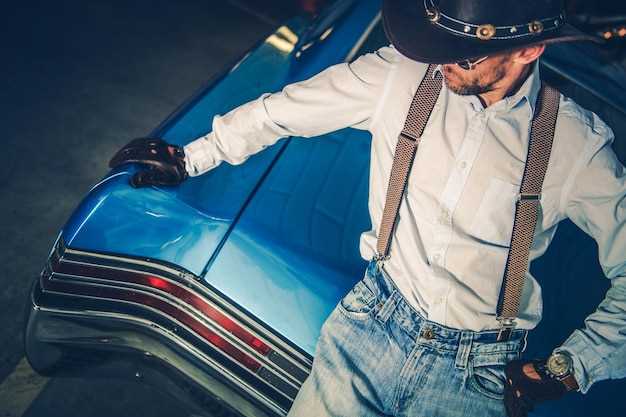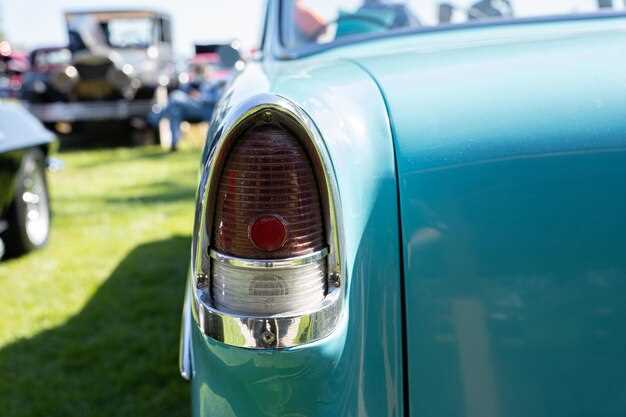How to Spot a Fake Classic Car

The allure of classic cars lies not only in their aesthetics but also in their rich history and craftsmanship. However, as the market for these vehicles continues to grow, so does the number of replicas and counterfeit models. Understanding the authenticity of a classic car is crucial for collectors and enthusiasts alike, as it can significantly impact the vehicle’s value and desirability.
In this guide, we will explore essential factors that define authenticity in classic cars. From examining the original documentation and production numbers to assessing distinctive features and components, we aim to provide a comprehensive overview that will aid enthusiasts in their quest for genuine classic automobiles. Recognizing the nuances that differentiate an original vehicle from a replica will empower collectors to make informed decisions.
We will delve into the significance of verified provenance, the importance of expert appraisals, and the role of classic car clubs and communities in preserving classic car heritage. By equipping yourself with the knowledge to identify authentic classic cars, you will enhance your appreciation for these timeless machines and secure your investment for years to come.
Examining VIN and Documentation for Verification
When evaluating the authenticity of classic cars, the Vehicle Identification Number (VIN) plays a crucial role. The VIN is a unique code that serves as the car’s fingerprint, providing essential information about its manufacturer, model, year of production, and place of assembly. To verify authenticity, start by locating the VIN, usually found on the dashboard, under the windshield, or on the driver’s side door frame.
Once located, cross-reference the VIN with various databases, including those maintained by car clubs, manufacturers, and government agencies. This process helps confirm the car’s specifications and its rightful history. Any discrepancies in the VIN can indicate possible tampering or alterations, which could undermine the vehicle’s authenticity.
In addition to the VIN, thorough documentation is critical for verification. Collect all available paperwork, such as the original title, service history, and warranty documents. These records not only offer insights into the car’s ownership history but also validate its mileage and maintenance practices. Documentation can reveal if the car has undergone significant modifications, which may affect its classic status and value.
Be particularly cautious with forged documents. Authentic classic cars often come with a rich history, including receipts for parts and repairs, photographs from restorations, or past ownership details. The absence of such documentation or the presence of inconsistency can be a red flag when assessing authenticity.
Ultimately, examining both the VIN and accompanying documentation is essential in the quest for verifying the authenticity of classic cars. A diligent review can prevent potential pitfalls and ensure that your investment in a classic car is both sound and rewarding.
Recognizing Distinctive Features of Original Models

When evaluating the authenticity of classic cars, identifying distinctive features of original models is crucial to differentiate them from fakes. Each classic car model has unique characteristics that reflect its era, craftsmanship, and manufacturing processes.
One of the most important aspects to examine is the identification number, commonly known as the VIN (Vehicle Identification Number). Authentic original models will have a VIN that corresponds to its production year and model specifications. Checking this number against official records can confirm a vehicle’s authenticity.
Another key feature is the presence of original parts. Classic cars often exhibit components that are specific to their model and year, such as switches, knobs, or even engine parts. Reproduced or aftermarket components may not match the original specifications, making it easier to spot a fake.
Additionally, the finish and detailing on original models tend to show the craftsmanship of the period. Assess the quality of the paint, the fit of body panels, and the presence of brand-specific features like badging or trim. Inconsistent details may indicate that a car has been restored with non-original parts, raising doubts about its authenticity.
Documentation is also vital in verifying authenticity. Original sales invoices, maintenance records, and restoration documents can provide insight into the car’s history. A lack of documentation or vague history can be a red flag when assessing a classic car’s legitimacy.
Lastly, the provenance of the car plays a significant role. Researching the ownership history can reveal whether the vehicle has been modified or restored improperly. Original models often have a clear lineage that supports their authenticity, whereas fakes may lack a reputable background.
Assessing Restoration Work and Components for Authenticity

Evaluating the authenticity of a classic car requires a thorough assessment of its restoration work and components. Identifying genuine parts and the quality of restoration is crucial to understanding the value and historical significance of the vehicle.
The following factors can help discern between authentic elements and potential fakes:
- Documentation:
Check for restoration invoices, photographs, and previous ownership records. Genuine restorations usually have a paper trail that documents the work done and materials used.
- Original Parts:
Inspect components such as the engine, transmission, and body panels for original part numbers, stamps, and serial numbers. Authentic parts usually display signs of aging consistent with their timeline.
- Quality of Work:
Assess the quality of the craftsmanship in repair work. Poorly done restorations may compromise the vehicle’s integrity, and shoddy finishes can indicate a fake restoration attempt.
- Patina and Wear:
Evaluate the natural wear and patina of parts. An authentic classic car should show signs of age, while a vehicle showing no signs of wear may raise suspicions of being overly restored or faked.
- Custom Modifications:
Be wary of custom modifications that may detract from the classic’s authenticity. While personalization is common, significant alterations can diminish value and authenticity.
By focusing on these factors, buyers can better assess whether a classic car is truly authentic or if it has been modified or restored in ways that undermine its historical value. Careful inspection of restoration work and components is essential for making an informed purchase decision.



